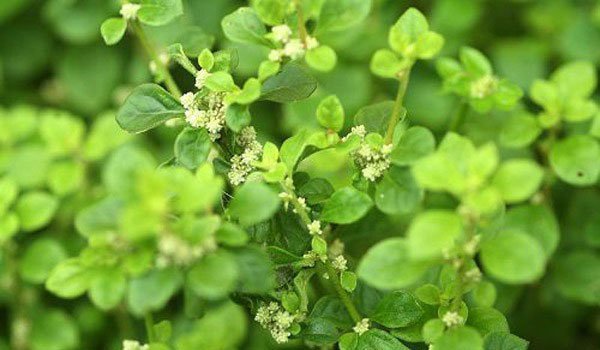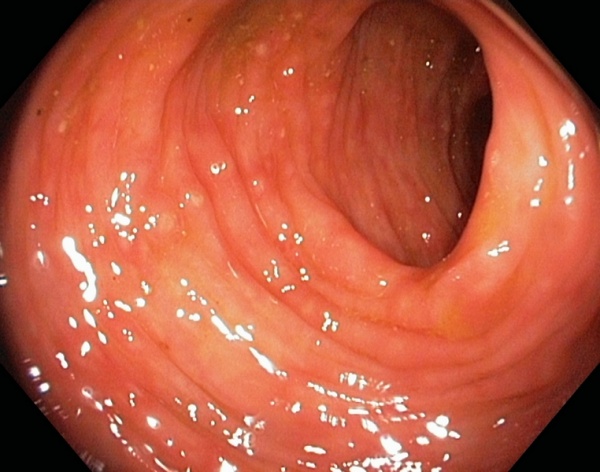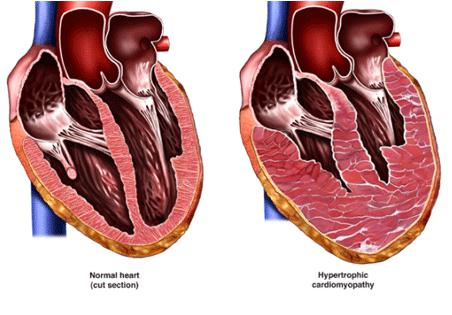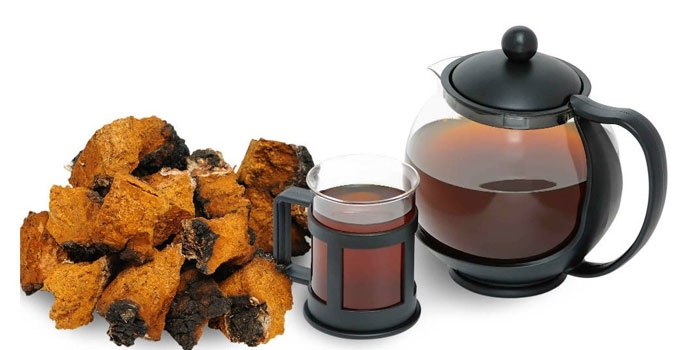How to quickly and effectively get rid of dry corns on the feet at home
Dry calluses are dense growths on the skin, most often they form on the feet. If left untreated, the corn will cause a lot of discomfort, and sometimes severe pain. Methods for the treatment of dry calluses on the legs at home are varied: mechanical, chemical, using folk recipes.
Dry corn and its causes
Dry corns are called rough thickening of the skin, appearing in areas of increased friction, having a yellow, gray tint. The formations themselves are not painful on palpation, but they squeeze the surrounding soft tissues, which causes serious discomfort. Conditionally dry corns on the feet are divided into the following types:
- Hard, or corns - compacted growths that are shallowly embedded in the skin. In appearance, these are small tubercles, covered with coarse callosity from above. Most often they appear on the sole, at the junction of the fingers and the foot, on the side of the little finger or on the thumb, less often between the fingers.
- Soft - corns with a wound on the outside, not too dense in structure. Over time, they transform into corns. Localization - in the interdigital spaces, on the bone behind the foot.
- Rod - inside they have a rod that extends into deep tissues. Often appear on the heel, on the foot from the sides, cause severe pain when moving.
Rare types of calluses are vascular, inside which there are blood vessels, and fibrous - a very dense zone of hyperkeratosis, covered from above with "cellular" callosity.
Most often, the problem occurs in girls and women who prefer to wear model shoes. Often, such shoes are narrow, high-heeled, tight, and therefore rub the skin of the foot, especially in the hot season. Dry calluses also often appear on a child’s leg if parents acquire shoes that are not suitable in size or fit, shoes that are too narrow. If the shoe block is of poor quality, calluses form on the heels, under the toes.
There are a number of risk factors that increase the risk of dry calluses:
- diabetes mellitus and other disorders of tissue trophism;
- psoriasis and a number of other skin diseases;
- arthrosis, arthritis of the joints of the foot;
- "bones" on the fingers;
- flat feet, clubfoot;
- obesity;
- excessive dryness of the feet;
- poor foot care;
- age-related loss of skin elasticity;
- foot hyperhidrosis;
- beriberi;
- intense sports.
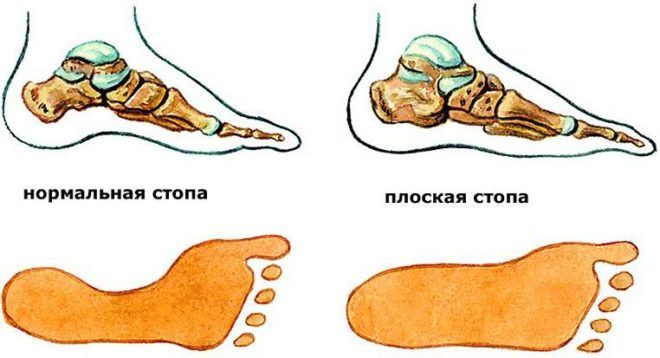
From the banal reasons for rubbing the feet, one can single out wearing shoes without socks, the use of synthetic underwear.
Mechanical removal of calluses
Mechanically, you can simply and quickly remove dry corns. Traditional medicine offers a number of methods for extracting corns and even calluses with a rod in just one procedure. To remove the formation, you need to contact a clinic or a beauty salon - so you can certainly protect yourself from infection and suppuration of the wound, as well as from pain. In some cases, the specialist uses local anesthesia, especially if the keratinization is large and deep.
Drilling out corns
Against deep defects, special cosmetic cutters are used - devices for drilling any dry corns. The specialist uses a drill to extract the callus without residue, along with the rod. After that, an antibiotic and an antifungal ointment are placed in the resulting recess. The skin around the callus is polished. If you wear the wrong shoes, corns can appear in the same place pretty soon.
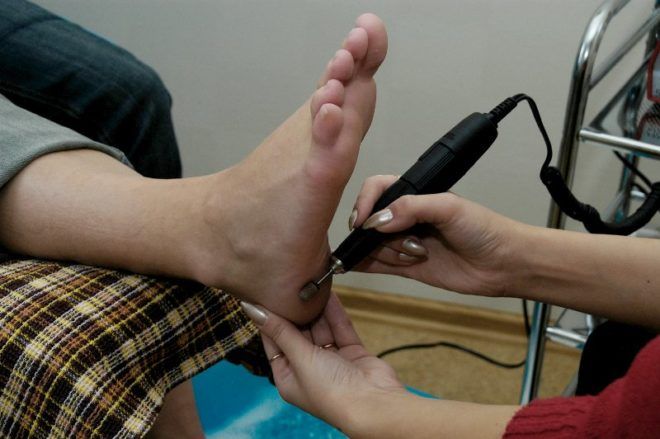
Liquid nitrogen - cryotherapy
The method of removing keratinized skin using cryodestruction is simple and effective. With it, you can correct the condition of the foot with any type of corns. Anesthesia is used to treat deep formations, because the process is quite painful.
Within 20-50 seconds, the specialist maintains the drug on the affected area of the skin. After edema, hyperemia appears on it, a bubble forms. After a couple of days, a dry crust will appear, which will fall off after 10-14 days.
laser treatment
Almost instantly, you can get rid of dry corns with a laser. It is especially recommended to treat the deepest, chronic, core corns in this way. Since the procedure is performed with anesthesia, there will be no pain, as well as blood - the laser beam immediately cauterizes the capillaries. This, among other things, ensures that there is no risk of infection of the wound, because the crust forms immediately. Usually, after laser treatment, dry corns disappear forever.
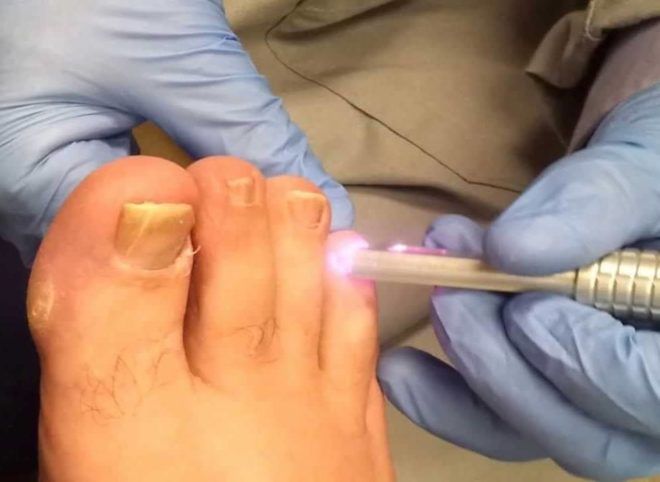
Pharmacy medicines for corns
If you decide to get rid of the problem yourself, at home, the easiest way to do this is with the help of pharmacy products. These include ointments, patches, gels, creams. Most often, they include salicylic acid and other keratolytics. Such drugs soften and force the upper stratum corneum to be torn off. Also, the composition of the funds may include acids that corrode calluses.
Important! Apply drugs from the pharmacy should be carefully, without affecting healthy skin.
This is a very handy tool in the form of a pen-applicator. Designed to remove dry corns at home. It contains a special thick TCA gel. It causes the callus to peel off, resulting in healthy skin appearing in its place. Instructions for using the tool step by step are as follows:
- Soak your foot in hot water for about 5 minutes to soften the callus.
- Gently treat the affected skin area with a pumice stone or foot file.
- Dry your feet well.
- Apply any oily cream around the corn.
- Take the pen, set it vertically, point the applicator down.
- Turn the cap clockwise until the applicator is saturated with gel.
- Apply the drug to the keratinization, avoiding contact with the skin around it (otherwise, wash the leg immediately).
- Allow the drug to dry for 15 minutes, then you can put on socks, shoes.
Important! It is necessary to apply Wartner gel until the corns completely disappear, usually 2-3 procedures are enough.

Corn patch
It is very convenient to remove dry corns with a band-aid. Such devices perfectly help with corns of small and medium depth. The patch is impregnated with a keratolytic (usually salicylic acid) and may also contain oils, plant extracts to soften the skin, or acids to enhance the effect.
Before applying the patch, you need to steam your foot in water, then wipe it dry. Next, you should cut a piece of the patch to the size of the growth on the leg, then it can be applied and glued. The patch must be worn for 6-8 hours. You can remove the corn in 2-14 days, depending on the severity of the problem. The most popular patches are as follows:
- Salipod;
- Compide;
- Doctor Foot.
Ointments against rough skin
There are many different ointments for dry corns. All ointments are best used after a foot bath and removal of the upper part of the callus with a pumice stone. Here is a list of known remedies:
- Nemosol. The composition includes salicylic acid, castor oil, lanolin, glycolic acid, sulfur. The cream is applied under the bandage for 1-2 days, then the remains of the callus are removed.
- Super Antimozolin. Ointment based on urea and lactic acid quickly exfoliates keratinization.
- Bensalitin. Contains salicylic and benzoic acids. It is necessary to treat a place on the skin with ointment every 2 hours.
- 5 days - anti-corn cream. Lanolin and petroleum jelly soften the corn, while salicylic acid exfoliates it.
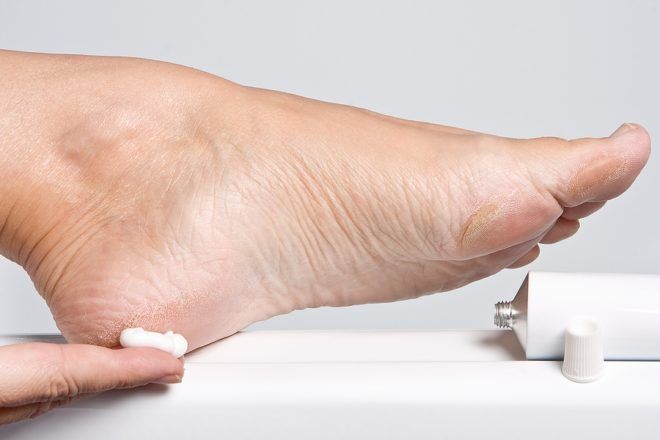
Other remedies for dry corns
Often, pharmacies recommend a paste for removing corns Doctor Foot with urea, celandine, D-panthenol and other components. Regular application to the corn leads to its softening and flaking day after day. Wear the paste under the plaster and bandage for up to 12 hours.
Another remedy is a Salton Fit foot pencil. In the composition - plant extracts, vitamin E, various oils. You need to lubricate the corns and corns with a pencil, and gradually they will disappear. The drug Corn Ka in the form of a solution includes BF-6 glue, castor oil, acids (lactic, salicylic), celandine. Callus Ku is applied with an applicator, the product dries instantly. The course of treatment is 2–5 procedures.
Folk methods of treatment
The people have a number of highly effective ways to get rid of corns. The best recipes for folk remedies are given below.
Apple vinegar
Pour 3 tablespoons of natural apple cider vinegar into a bath of hot water. Hold your feet there for 10 minutes. Wipe the skin with a towel, apply the usual salicylic ointment, seal with a plaster. Go to bed with a sock on. Course - 7-10 procedures.
Bake a small onion in the oven until it is soft. Cut off a slice from the onion, tie it all night to the callosity. Put on a sock on top. In the morning, clean off the formation with a pumice stone, repeat regularly until the skin recovers.
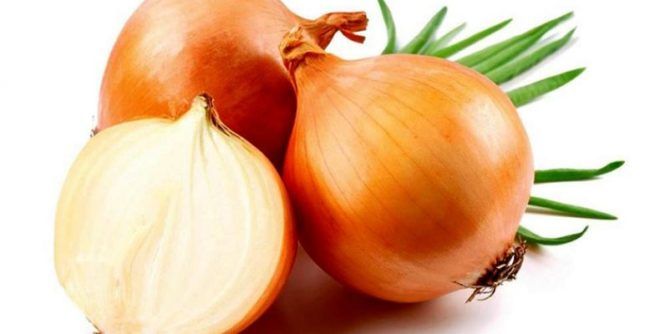
bee glue
Steam the leg in soapy water for 5 minutes, then rinse and dry. Glue a piece of propolis with a plaster directly to the coarsening of the skin, do not remove it for 2-3 days (after taking water procedures, you need to replace the propolis with a new one). After treatment, remove the corn.
Lemon
Twist the lemon with zest in a meat grinder (one slice is enough), wrap the gruel with a bandage to the defect on the leg. Put on a sock, go to bed. In the morning, soft callus can be easily removed.
Iodine and potatoes
Dilute in a bath with water 2 tablespoons of salt, the same amount of iodine. Steam your leg for 15 minutes in this solution. Next, tie a gruel of raw potatoes to the corns for the whole night. Remove defect in the morning.
onion peel
Soak the onion peel in table vinegar for 2 weeks and then tie it to the corn for 2-3 hours until you can get rid of it.
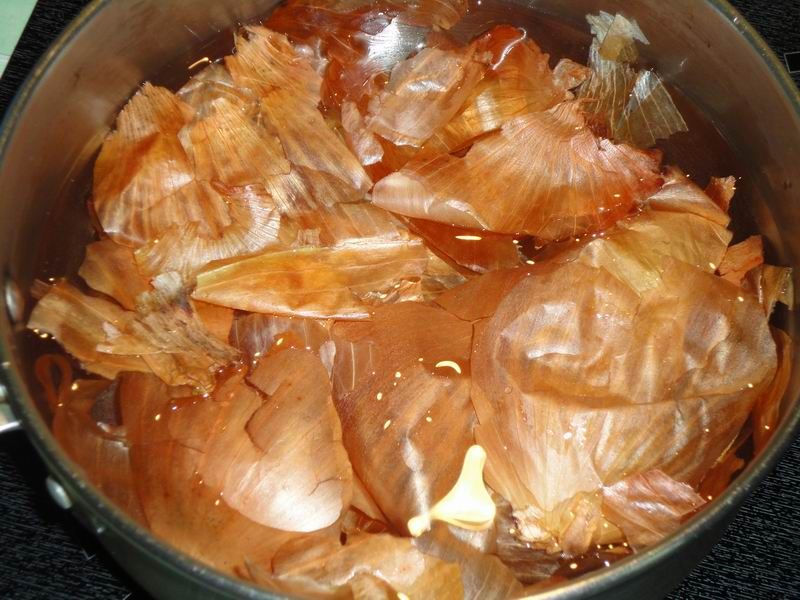
Meat
Fresh meat can also be tied to the skin with coarseness in the form of a compress. It is necessary to keep the compress during the night, the course is up to 8-10 procedures.
soda and chamomile
Brew 2 tablespoons of chamomile in 2 liters of boiling water, leave for an hour. After warming the infusion, pour 50 g of soda into it. Carry out a water procedure for the legs for 15 minutes, then the corn can be removed with a pumice stone.
Aloe
An aloe leaf should be wrapped around the leg every night, and in the mornings, part of the callus should be scraped off with a foot file.
Oatmeal
Boil ordinary oatmeal in water, apply the hot mass on the foot. Wrap your leg in cling film, put on a sock. Keep the compress for 3 hours. Course - 14 procedures, during this time even the deepest calluses are removed.
- Intercostal neuralgia - what is it and how to treat
- How to quickly get rid of dry corns on the legs
- How to treat left ventricular hypertrophy
- Rating of the best drugs for rotavirus for children
- Making tea from currant leaves, the benefits and harms of the drink
- How to drink hydrogen peroxide according to Neumyvakin - an oral regimen
- Features of the treatment of plantar fasciitis with folk remedies
- The composition and beneficial properties of parsley root
- How to get pregnant quickly? Folk remedies
- Herbs-ants in the "pot-bellied" period or the use of herbal medicine during pregnancy
- Why does a sore throat and dry cough occur, and what treatment is required?
- Guy's Room Design: Ideas and Examples
- General rules for drawing up a foundation plan House foundation drawings
- modern art deco bedroom small art deco bedroom
- Pansies: characteristics and photos of flowers
- Making an art deco bedroom: the choice of materials Beige art deco bedroom
- Bedroom interiors in art deco style Bedroom art deco style beige
- Young: planting and care in the open field Young planting and care in the open
- Varieties for open ground
- Pansies: cultivation and care in the open field




